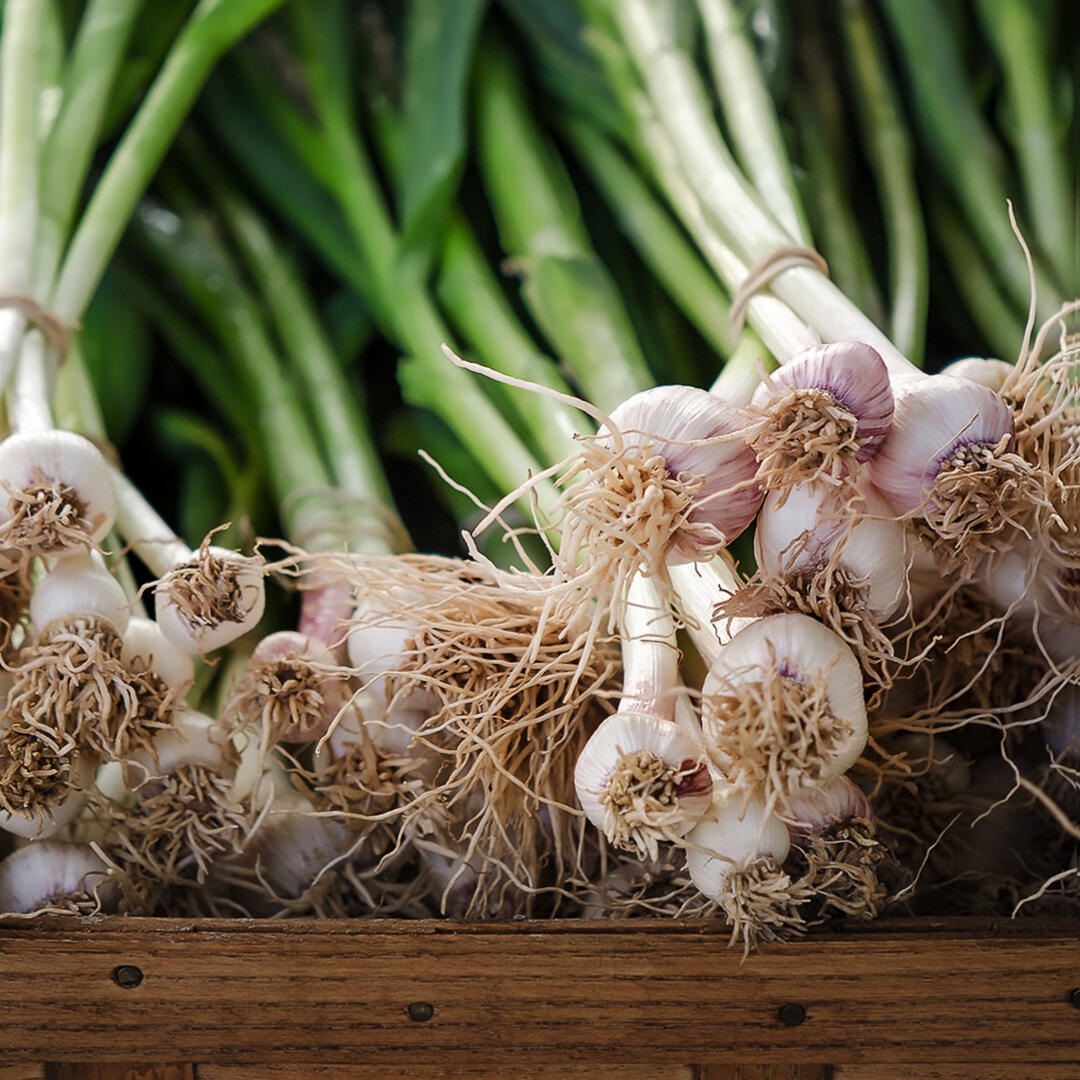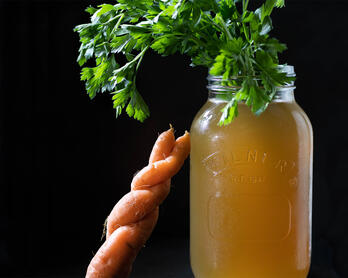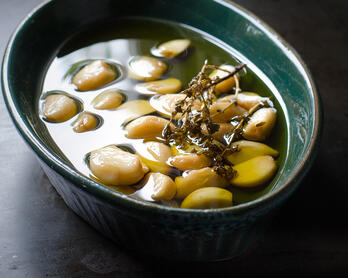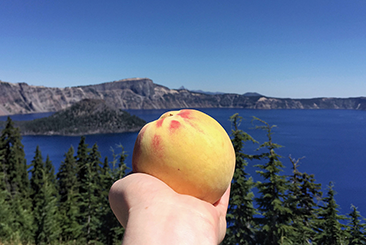Vegetarian Fish Sauce

RECIPE UPDATED 4/2/23
East Asian and Southeast Asian are very broad terms for cuisine. With that acknowledged, it's fair to say that fish sauce is an ingredient commonly found in dishes throughout those regions. The production and trade of fermented fish as a salty, savory seasoning (known as garum) goes back to Roman times with some suggesting it was the ketchup of its day. Since garum seems to be trending in the food world lately, it's worth noting that all fish sauce is not garum but garum is one of a myriad of different kinds of condiments made from fish bits.
From the protein content to briny complexity, intellectually I understand why fish sauce has been a pantry staple for so many cultures over thousands of years. The challenge I've encountered in the kitchen is that every time I make a recipe with fish sauce my palate zeroes in on that ingredient and just doesn't care for it. Perhaps I haven't had quality fermented ocean dwellers? We'll get to that.
My relationship with fish sauce - both vegetarian and real - took a positive turn while listening to KCRW Good Food. Joanne Lee Molinaro, author of Korean Vegan, was discussing the cookbook's "Fishy Sauce" recipe and mentioned that her mom likes it more than the real thing. Since everything people say whilst on a book tour must be true, I bought the book and then did a little research for context.
Fish sauce's funky umami is foundational to so many cuisines that I wondered what (if anything) gets lost in translation when it's converted to a plant-based version. A positive take might be: What makes vegetarian fish sauce work? See Around the Dinner Table below for more on this.
Korean Vegan's Fishy Sauce has a salty depth that tastes of the sea but isn't fishy in the way I perceive fish sauce to be. Fishy Sauce is such a versatile ingredient that it graduated to my Airstream's core pantry which is a tough ticket to get given the limited space. I add it to chili, finishing sauces, pad Thai, and occasionally use it in place of soy sauce.
But before publishing the post...
I wanted to give fish sauce another go and ended up trying Haku Iwashi Whiskey Barrel Aged Fish Sauce and Red Boat, the latter being one of the most widely suggested brands. Of the two I prefer the Haku Iwashi but plan to use both.
The verdict is that the original premise of this post still partially holds true. While I have a new appreciation for fish sauce and have used it in several dishes, I'm still The Princess and the Pea with quantities. When I follow recipes to the letter the fish sauce tends to jump out at me but a 50/50 blend of vegetarian and the real deal strikes a good balance. The same approach applies with anchovies in that I like to leverage their savory qualities but stop short of adding so much that I can taste the individual ingredient.
A happy ending.
Around the Dinner Table
Gimme The Funk
Fish sauce's funky salty umami is foundational to so many cuisines that I began this research wondering what (if anything) gets lost in translation when its converted to a plant-based version. A more positive take might be: What makes vegetarian fish sauce work?
Umami seemed like the logical place to start. It's the perception of savory that you can't quite put your finger on but somehow recognize when eating fish sauce, roasted tomatoes, and Parmigiano Reggiano . Without umami, vegetarian fish sauce isn't going to do the job.
Glutamate Got Your Tongue
The drivers behind umami are monosodium glutamate (an amino acid) and its sidekicks disodium guanylate (a nucleotide) and disodium inosinate (also a nucleotide). A handy Popular Science graphic breaks that relationship down a bit and shows how glutamate is basal umami while guanylate and inosinate are synergistic umami. Our tastebuds have a receptor especially designed for free glutamate's shape. When glutamate plugs into said receptor, you can imagine your tastebuds are giving it a hug and saying, "hello, delicious." That embrace is a little tighter or enhanced if guanylate or inosinate are present.
Glutamate and guanylate are naturally abundant in dried seaweed, dried shiitake mushrooms, and soy sauce - all of which are ingredients in Fishy Sauce so no issue on there being plenty of umami. The journal Flavour puts a bow on what makes vegetarian fish sauce a good substitute:
Classic Japanese cuisine revolves around dashi made from konbu [dried seaweed] and katsuobushi [bonito flakes]. In the strictly vegetarian temple kitchen, also known as 'the enlightened kitchen', katsuobushi is replaced by dried shiitake. Konbu provides glutamate and shiitake provides guanylate to replace inosinate from katsuobushi. The synergetic action in umami is even stronger in the pairing of glutamate with guanylate than with inosinate.
While the question of why vegetarian fish sauce works seemed to be answered and was certainly interesting, it didn't turn out to be the most useful nugget of cooking wisdom I found. That honor goes to the striking chemical transformation of mushrooms, seaweed, tomatoes, and other foods during the drying process.
Dried vs. Fresh
Up until now, it had never occurred to me that there was a significant difference between dried and fresh shiitake mushrooms other than one was less hydrated. It turns out that dried shiitakes have 15x+ more glutamate (basal umami) than their fresh counterparts and dried shiitake mushrooms have guanylate whereas fresh do not.
You can keep going with this theme when looking at tomatoes as they ripen or cheese as it ages. The glutamate in a tomato increases 10x as it ripens which explains the sensory delight when eating the fruit in peak season. And sundried tomatoes have 3x the glutamate as fresh, validating my craving for them as more than purely 1990s nostalgia.
The way food chemically changes simply by being dried kind of blew my mind. With this new knowledge in hand, I plan to start using dried mushrooms in my vegetarian and chicken stocks and generally plan to rethink how I use dried vs. fresh ingredients.
 Garlic at Schaner Farms - Santa Monica Farmers Market
Garlic at Schaner Farms - Santa Monica Farmers Market
Recipe Tips
Easy Does It
A tip mentioned in Korean Vegan is that you can have too much of a good thing with kombu (dried seaweed). If you leave kombu in simmering broth for an extended period of time, it can start to break down and add unpleasant qualities such as bitterness. This issue doesn't present itself with the Fishy Sauce recipe but could if you went beyond the suggested cooking time.
Kombu vs. Konbu
Both kombu and konbu are types of dried seaweed, one hailing from China and the other from Japan. Eden Foods kombu was available at my store so that's what I used. A quick search suggested that either konbu or kombu will be fine if the product is good quality.
Original vs. Adapted
Mushrooms
The cookbook lists shiitake and enoki mushrooms but the instructions don't mention the latter. Shiitake mushrooms work well so that's what I swapped in.
Farmers | Artisans
I make an effort to source my food from California artisans with a special focus on the Santa Monica Farmers Market. Below is a list of the folks who contributed to this dish.
- Finley Farms // Shallots
- Milliken Family Farms // Garlic
- Schaner Farms // Garlic
Ingredients (Gently Adapted from Korean Vegan)
- 24 ounces (3 cups/708 grams) filtered
water - 15 ounces (1 1/2 cups/420 grams) soy sauce
- 1 ounce (30 grams) dried shiitake mushrooms Note: I used a mix of small caps and larger slices.
- 2 shallots, roughly chopped - 1 3/4 ounces/50 grams after prep Note: I used red onion when shallots weren't on hand.
- 4 garlic cloves, peeled and lightly crushed
- 5 (2-inch) squares of kombu
- 2 tablespoons mirin
- 2 tablespoons balsamic vinegar
- 2 tablespoons rice vinegar
- 1 tablespoon black peppercorns
Instructions
- Line a mesh strainer with 2 layers of cheese cloth and place over a bowl or a large spouted measuring cup. Set aside.
- In a medium non-reactive saucepan, combine everything and bring to a boil. Reduce to a gentle simmer and partially cover. Simmer for an hour.
- After an hour, pour the contents of the pot into the mesh strainer and press the solids against cheese cloth. Twist up the sides of the cheesecloth and give things one more good squeeze. Note: The solids are quite hot and you want to extract every drop out of them. I usually let the cheesecloth bundle cool off a little before giving things a squeeze. I had about 2 1/2 cups of liquid after straining.
- Pour the liquid back into the pot and simmer until you have 1 1/2 cups.
- Cool and refrigerate in an airtight container. The cookbook suggests it will last for months. You can also freeze the sauce for longer storage.
Packing for the Airstream
If refrigerated or stored in a cooler, the sauce will keep for weeks. As mentioned in the intro, I reach for Fishy Sauce often and sometimes use it in place of soy sauce or incorporate a bit into chili and finishing sauces. It's a great way to add savory depth to a dish, especially when working with a small RV or camp kitchen.
Newsletter
Subscribe at the bottom of this page for the Chic Eats roundup. It includes new and updated recipes along with a grab bag of content that was interesting enough to share around the dinner table.






